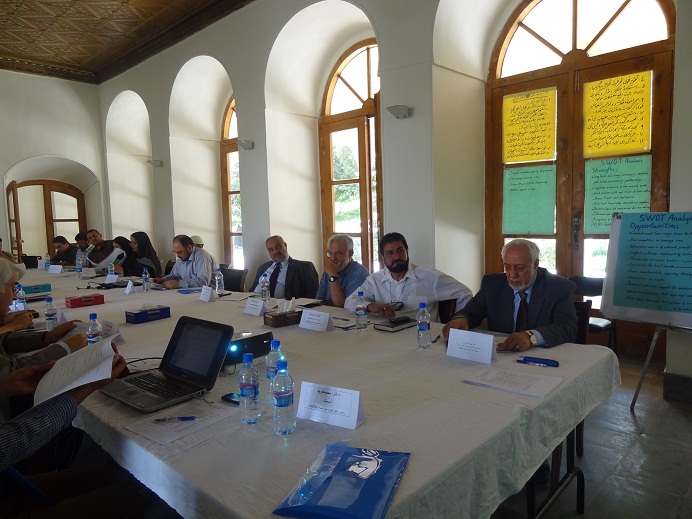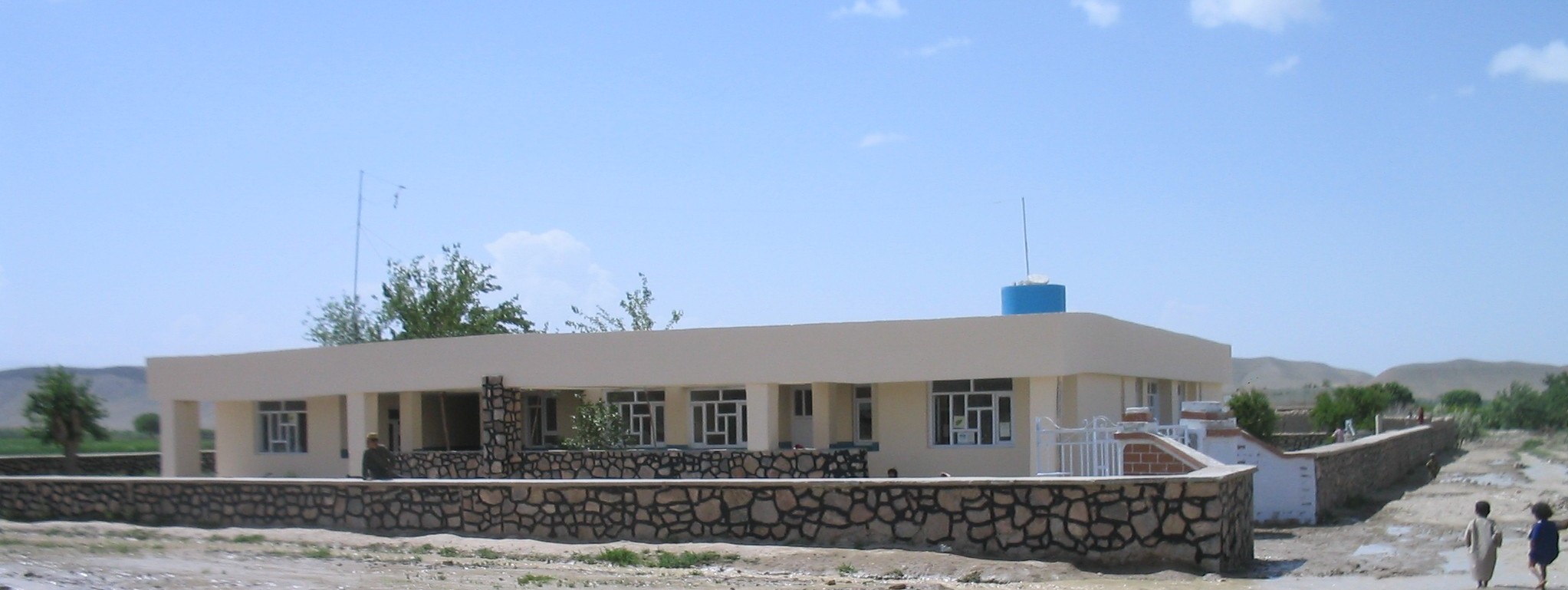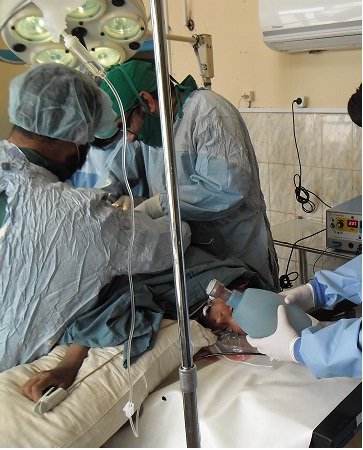Healthcare
programs contribute to the following SDGs

Health situation in Afghanistan
Afghanistan developed packages of basic services (BPHS and EPHS) to ensure a rapid expansion of basic healthcare services to the under-served and badly affected population across the country at the health facility and community levels. The development and use of these packages were effective first steps in standardizing and harmonizing service delivery in the Afghanistan public health sector. The new Integrated Package of Essential Health Services (IPEHS) benefit package was proposed to replace BPHS and EPHS in order to address these gaps and improve overall effectiveness of healthcare and reduce out of pocket (OOP) for health.
Afghanistan Multiple Indicator Cluster Survey (MICS 2023)
- Under-5 mortality rate was 55 deaths per 1,000 live births.
- Infant mortality rate was 46 deaths per 1,000 live births.
- Newborn mortality rate was 24 deaths per 1,000 live births.
- Vaccination: 36.6% of children age 12-23 months had basic immunization, while 16.2% (24-35 months) were fully immunized.
- Early breastfeeding: 47.7% children are breastfed at 1st hour of their life.
- Only 63.3% of infants under age 6 months were exclusively breastfed.
- Under five children nutrition: 44.7% stunted, 3.7% wasted and 1.2% severely wasted.
- Education: 0.9% for 3-4 years old, 28.3% for 5-6, 47.5% for 7-12, 20.3% for 13-15 and 19.5% for 16-18 years old.
- Antenatal care coverage was 76.4%, only 33.4% had four recommended visits.
- Delivery: 67.5% of births were delivered with skilled birth attendant (midwife).
- Postnatal care: 36.3% of mothers and 34.4% of newborns had PNC during first 2 days after birth.
- Birth registration was 47.8%.
- Total fertility rate was 5.4 children per woman.
- Access to basic drinking water was 68.8%.
- Access to basic sanitation was 44.5%.
- Open defecation was 19.8%.
AHDS Healthcare services
AHDS has decades experience of developing and implementing healthcare in different provinces of Afghanistan. The healthcare and health related projects include, but not limited to, primary health care (PHC), basic package of health services (BPHS), essential package of hospital services (EPHS), reproductive, maternal, newborn, child, adolescent health (RMNCAH), expanded program on immunization (EPI), integrated management of acute malnutrition (IMAM), polio eradication, control of communicable diseases (Tuberculosis, Malaria and HIV), supplementary feeding program (SFP), institute of health sciences (IHS), community midwifery education (CME), community health nurse education (CHNE), school health and nutrition (SHN), protection of gender based violence survivors (GBV), management of sexually transmitted infections (STI), water-sanitation and hygiene (WASH), emergency healthcare, first aid trauma point (FATP), mobile health and nutrition teams (MHNT), mental health and psychosocial support (MHPSS), and recently strengthening COVID-19 response.

AHDS entered the health sector when all other sectors including the health system were almost totally destroyed in the country (1990). Provision of healthcare services in conflict and fragile areas is the main expertise of AHDS. We have not only continued, but expanded our services for the communities direly in need. AHDS has served millions of people, by tireless efforts of the staff and vigorous help of the national and international supporters. AHDS has been able to take firm strides in the areas of health and education development and services in Afghanistan. Activities of AHDS are well coordinated with national and local government authorities, community elders, and other stakeholders. Throughout the years, AHDS has had continuous presence and active participation in the task forces and workshops lead by the local and international agencies related to capacity building, providing health services and improving quality and accessibility.

AHDS has provided healthcare services under any political and security circumstances. AHDS gained the art and science of how to work in difficult area in terms of geographical, traditionally conservativeness and most insecure by insurgencies. Insurgency does not only cause security risk, but simultaneously deteriorate availability of qualified staff, proper living conditions and attractiveness for professional staff from other places; while traditional conservativeness adds on that challenges.
The secret of our success is related to our ability to reach peoples, gain their support and corporations and involve them in our efforts. Without critical support and collaboration from these communities, AHDS’ success would not be possible. Our experiences are indicative that by directly engaging and involving communities in our efforts and making them aware of their rights and responsibilities, we can ensure sustainable development.
A major part of our success is due to the acceptance we have gained from the local communities and the cooperation they continue to provide. Without the critical support and collaboration of these communities AHDS’ success would not be possible. It is this idea that transcends the financial assistance coming from the international community, and stresses the importance of communities assuming the kind of practical, on-the-ground responsibility for the continuing improved health of this and future generations. Without a sense of personal responsibility in the local communities to complement the broader social responsibility of the international community, the sustainability of reconstruction efforts such as ours will be at great risk. There is no doubt that Afghanistan is not ready to be free of international assistance. But without local Afghans accepting personal responsibility for the on-going health of the members in their community, it will be impossible for the country to prosper.

AHDS started its work by establishing training center for community health worker (CHW), construction of destroyed health facilities and provision of primary health care (PHC) through comprehensive and basic health centers (CHC and BHC) in rural areas. The undertaking of health infrastructure rehabilitation was indeed an enormous task that required day and night work, facing all odds and challenges. In order to rehabilitate the primary health care system, we established health facilities one by one, trained the health staff, introduced voluntarism, attracted donors and at last expanded the program all over the province.

AHDS had to compete with the harsh times of lack of professional staff, economic sanctions, drought, security threats, martyrdom of a number of health staff, kidnaps and robberies on top of the cultural barriers prevailed in the target areas.
AHDS has increased access to healthcare services, improved the quality of services in the health facilities and strengthened community involvement and ownership of health services in the target provinces. Available service utilization and quality of healthcare depend on improving health seeking behavior and healthy practices by the population, especially women.
AHDS is proud of its trust built among the communities, recognition by the provincial and local authorities, respectful relations with all the stakeholders, and smooth and transparent hand over of the BPHS project to its successors (provincial health directorate or NGO).

AHDS was one of the pioneers for Basic package of health services (BPHS) and Essential package of hospital services (EPHS) in the country. Furthermore, the health services are provided through establishing birth centers, mobile health teams (MHT), first aid trauma points (FATP) and partnership with the private health service providers (PHP).
Healthcare services has been complemented with health-related projects like school health and nutrition education, community-based management of acute malnutrition, water and sanitation and hygiene education projects.

